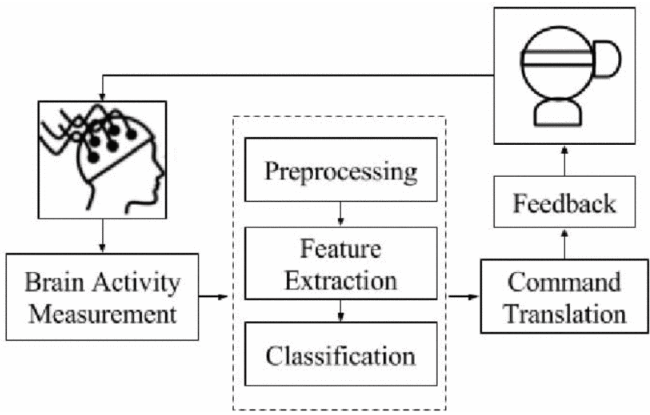As virtual reality (VR) capabilities continue to expand, researchers hope to create a more real-world experience by connecting VR directly to the brain. Through Brain-based Computer Interface (BCI), VR could become a more natural experience for users, with the potential to significantly impact a variety of fields, from video game technology to medicine.
As VR grows in popularity, researchers are trying to further understand its benefits and potential impacts on the way we live our lives. Its increasing capabilities, processing speeds and hardware developments have made VR more useful, affordable and responsive. However, many believe VR still isn’t reaching its full potential. According to researchers from Pace University, connecting to the brain could revolutionize VR development.
BCI involves connecting a person’s brain to a computer through sensors that transmit brain waves. These sensors allow the computer to receive direction from the fingers, voice, eye gaze, skin, head and body position of a connected user.
Current BCI systems use real-time Electroencephalography (EEG) to quickly process and translate brain waves into control signals for the VR software. After preprocessing these signals, the system classifies the extracted features before translating these signals into commands in the VR simulation.

Figure 1: Model of the on-line BCI
“The combination of BCIs and VR could provide a seamless interface between the real-time virtual environment and the user,” said Sukun Li, UX/UI research fellow at Pace University. “The computer could be more intelligent to understand users’ affective status and deliver seamless feedback. This feedback between the virtual devices and a human user could have a more satisfying immersive experience and more direct communication.”
By incorporating BCI, developers hope to fill the “3 Is” of VR: immersion, interaction and imagination. Right now, there is a gap in sustaining continuous immersion because current technology prevents VR from creating a more lifelike experience. Researchers hope to fill that gap with BCI VR devices.
“The aim of BCI VR is to find the most natural and most straightforward way of human-computer interaction,” Avery Leider, research fellow at Pace University said. “The seamless user interaction is a crucial issue in video games for game performance and guiding simulations of transcranial simulations. BCI VR could help provide the necessary interaction in a virtual environment.”
Going forward the researchers expect improvements to be made in the comfort and connections of current BCI VR devices. EEG signals tend to make a lot of noise and require high temporal precision, so researchers are experimenting with ways to filter the noise and make it easier for the devices to process signals from users.
In addition, researchers and engineers hope to begin testing artificial intelligence techniques with the BCI VR system. By pairing the two, the researchers believe they can improve medical research by creating more accurate simulations of the human brain for analysis and exploration.
Whether it is for entertainment or medical use, the combination of BCI and VR is set to have a significant impact on society. As BCI VR technology is improved, it is likely these systems will soon be standards in homes and hospitals.
For more information on brain computer interface, visit the IEEE Xplore Digital Library.





